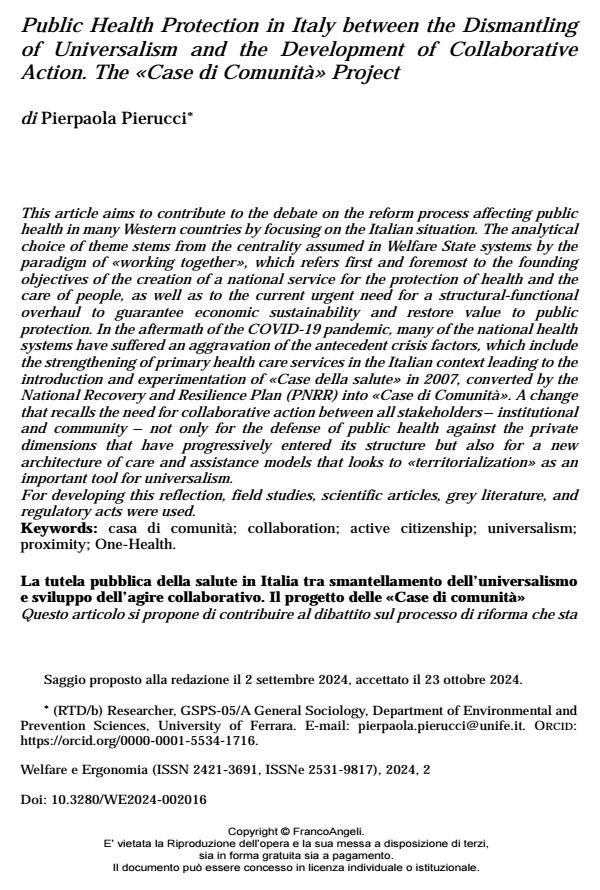Public Health Protection in Italy between the Dismantling of Universalism and the Development of Collaborative Action. The «Case di Comunità» Project
Journal title WELFARE E ERGONOMIA
Author/s Pierpaola Pierucci
Publishing Year 2025 Issue 2024/2
Language English Pages 12 P. 241-252 File size 94 KB
DOI 10.3280/WE2024-002016
DOI is like a bar code for intellectual property: to have more infomation
click here
Below, you can see the article first page
If you want to buy this article in PDF format, you can do it, following the instructions to buy download credits

FrancoAngeli is member of Publishers International Linking Association, Inc (PILA), a not-for-profit association which run the CrossRef service enabling links to and from online scholarly content.
This article aims to contribute to the debate on the reform process affecting public health in many Western countries by focusing on the Italian situation. The analytical choice of theme stems from the centrality assumed in Welfare State systems by the paradigm of «working together», which refers first and foremost to the founding objectives of the creation of a national service for the protection of health and the care of people, as well as to the current urgent need for a structural-functional overhaul to guarantee economic sustainability and restore value to public protection. In the aftermath of the COVID-19 pandemic, many of the national health systems have suffered an aggravation of the antecedent crisis factors, which include the strengthening of primary health care services in the Italian context leading to the introduction and experimentation of «Case della salute» in 2007, converted by the National Recovery and Resilience Plan (PNRR) into «Case di Comunità». A change that recalls the need for collaborative action between all stakeholders - institutional and community - not only for the defense of public health against the private dimensions that have progressively entered its structure but also for a new architecture of care and assistance models that looks to «territorialization» as an important tool for universalism. For developing this reflection, field studies, scientific articles, grey literature, and regulatory acts were used. <a href="https://static.francoangeli.it/fa-contenuti/riviste/riviste_allegati/we/we2024-002016-la.pdf" target="_blank" >Long abstract </a>
Keywords: casa di comunità; collaboration; active citizenship; universalism; proximity; One-Health.
Pierpaola Pierucci, Public Health Protection in Italy between the Dismantling of Universalism and the Development of Collaborative Action. The «Case di Comunità» Project in "WELFARE E ERGONOMIA" 2/2024, pp 241-252, DOI: 10.3280/WE2024-002016